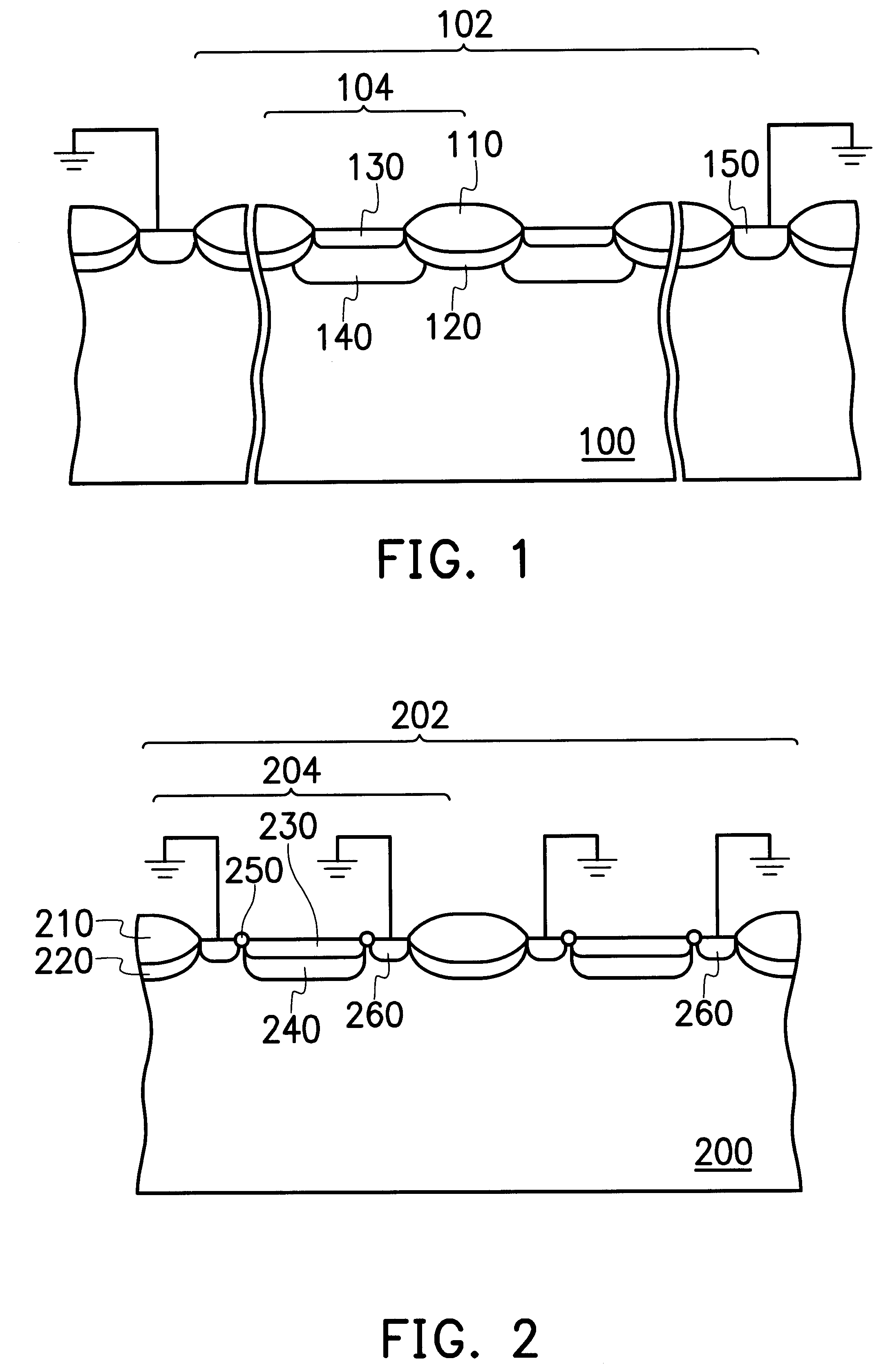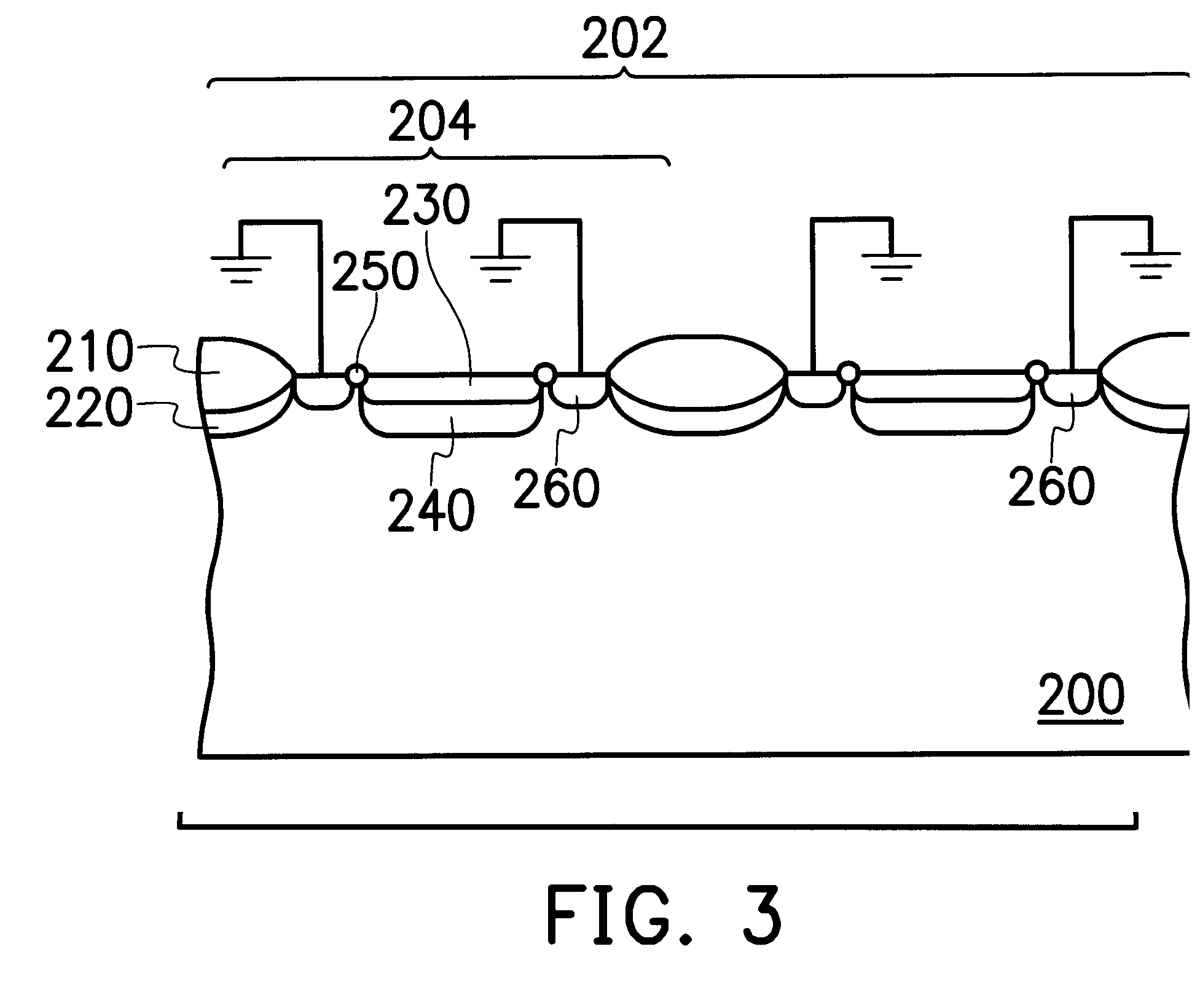Photodiode
a photodiode and image sensor technology, applied in semiconductor devices, radio frequency control devices, electrical equipment, etc., can solve the problems of increasing noise during photosensing measurement, reducing the stability of the photodiode cmos image sensor, and non-uniform distribution of electrical field in the photodiode array, so as to reduce current leakage phenomenon, reduce read noise, and improve quality. reliability
- Summary
- Abstract
- Description
- Claims
- Application Information
AI Technical Summary
Benefits of technology
Problems solved by technology
Method used
Image
Examples
Embodiment Construction
An n.sup.+ / p photodiode of a P-type substrate with an N-type doped region is used in this embodiment, but is not restrictive of the invention.
In FIG. 2, a cross sectional view of a photodiode array and a photodiode is shown. The photodiode array could be applied in a photodiode CMOS image sensor. As FIG. 2 illustrates, the photodiode array 202 is formed by several photodiodes 204. Each photodiode 204 comprises a P-type substrate 200, an N-type heavily doped region 230, an N-type lightly doped region 240, a dummy isolation layer 250, a P-type heavily doped region 260, an oxide layer 210 and a channel stop layer 220.
The N-type heavily doped region 230 is located in the P-type substrate 200 of which the doping concentration is lower than that of the N-type heavily doped region 230. The N-type lightly doped region 240 is located under the N-type heavily doped region 230, so that leakage current phenomenon at the peripheral of the oxide layer 210 can be further reduced. The dummy isolat...
PUM
 Login to View More
Login to View More Abstract
Description
Claims
Application Information
 Login to View More
Login to View More - R&D
- Intellectual Property
- Life Sciences
- Materials
- Tech Scout
- Unparalleled Data Quality
- Higher Quality Content
- 60% Fewer Hallucinations
Browse by: Latest US Patents, China's latest patents, Technical Efficacy Thesaurus, Application Domain, Technology Topic, Popular Technical Reports.
© 2025 PatSnap. All rights reserved.Legal|Privacy policy|Modern Slavery Act Transparency Statement|Sitemap|About US| Contact US: help@patsnap.com



